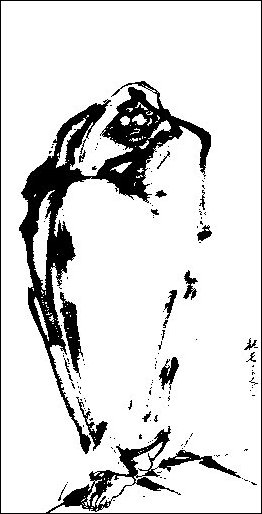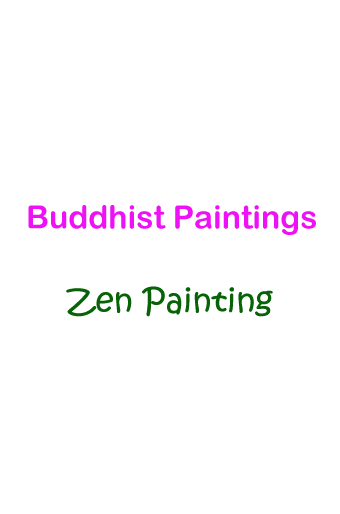



|
Among all the Buddhist paintings in China, we can say that Zen painting had very little to do with the Indian influence. This sounds very obvious since even Zen itself was mostly a creation in China rather then coming from India. Of course, one can argue that the founder of Zen in China was the Indian monk Bodhidharma who came to China in the year 527 AD and Bodhidharma was said to be the 28th patriarch in line of descent from Buddha's disciple Kasyapa. In this sense, Zen was of course originated in India. According to legend, once Sakyamuni Buddha was questioned about the nature of the ultimate reality, he was said to have holding a flower from a bouquet of lotus. Not a word came out of his mouth and nobody understood the meaning of this except Kasyapa who quietly smiled at the Buddha, as if he fully comprehended the purport of this silent but eloquent teaching from the Buddha. The Buddha, in perceiving this, proclaimed : ' I have the most precious treasure, spiritual and transcendental, which this moment I hand over to you, O venerable Mahakasyapa'. Ever since this event, there was a tradition in Buddhism known as Dhyani, meditative Buddhism or Zen. When Bodhidharma arrived in China, it was during the Liang dynasty emperor Wu's reign. It was said that Bodhidharma settled in a small temple in northern China where he sat facing a wall, contemplating for 9 years and was considered as the first patriarch of Zen. One of the most important figures of Zen was the 6th Patriarch, Hui Neng who lived from 637 to 713 during the Tang Dynasty. Zen painting, tightly associated with Zen Buddhism, began to emerge during the late Tang Dynasty, and flourished during the Northern and Southern Sung Dynasties. One can also understand the Zen painting following the teaching of Zen, such as: " A special transmission outside the doctrinal teaching. No dependence on letters or words, pointing directly at the Mind in every one of us, and seeing into one's nature, whereby one attains Bhddhahood." In other words one can also understand a Zen painting as pointing directly at one's mind, characterized in its rough and spontaneous manner. Some people call it the i-pin or untrammeled style, achieving a strength and freedom, which separate the Zen painting very much from other Buddhist paintings. Zen painting does find some traces even in modern art in China. But it is more appropriate to say that Zen painting is more popular in Japanese art. In this issue we would present a few examples of Zen paintings as well as depictions of some patriarchs of Zen.
|